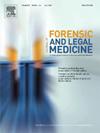Forensic aspects of healthcare-related murders: a series of homicides and attempted homicides committed by nurses in Italy
IF 1.2
4区 医学
Q3 MEDICINE, LEGAL
引用次数: 0
Abstract
The murder of patients entrusted to the care of healthcare professionals presents an exceptionally rare and complex scenario. The motivations of the perpetrators, usually termed "angels of death" by the media, are not uniform and are often intricate, resulting from a unique combination of individual factors. Among the most sinister motivations are the altruistic desire to end the suffering of severely ill patients—concealing narcissistic-omnipotent tendencies or pathological insecurity—or even the pursuit of pure sadistic gratification. Due to the unique and complex nature of this field, determining the cause of death and the manner in which these victims were murdered poses significant challenges in forensic science. This study presents a retrospective analysis of deceased patients under questionable circumstances, documenting 43 cases of suspected or attempted homicides perpetrated by healthcare personnel across four healthcare facilities in Italy between 2004 and 2019. Most of the victims were elderly, vulnerable, and frail, with 72% hospitalized and 28% residing in nursing homes. The most common methods of inducing death included anticoagulant drugs (37%), intravenous gas injection (35%), promazine and/or other psicotropic drugs (14%), and insulin (7%). The investigation of suspected serial homicides in healthcare settings revealed several critical forensic considerations: i) a timely collection of toxicological samples should be performed within the first few hours post-mortem, due to the rapid degradation of chemical compounds; ii) a comprehensive autopsy examination, complemented by ancillary investigations (e.g., histopathological, toxicological, microbiological, and radiological analyses) should be considered mandatory; iii) in suspected cases of drug administration, the pathologist should carefully analyse the injection site, while a thorough examination of the lungs and pulmonary arteries is crucial in suspected gas embolism; iv) in some cases, exhumation could be necessary. Finally, we propose an operational flowchart to help stakeholders identify potential red flags and recognize dangerous situations, as well as assist forensic pathologists in determining the cause of death in cases of suspicious or unexplained fatalities. This flowchart provides a structured framework for investigations, ensuring a systematic and comprehensive approach to identifying potential homicides in healthcare settings.
与医疗保健有关的谋杀的法医方面:意大利护士犯下的一系列谋杀和谋杀未遂
委托医疗保健专业人员照顾的病人被谋杀是一种极其罕见和复杂的情况。肇事者通常被媒体称为“死亡天使”,他们的动机并不统一,而且往往错综复杂,是个别因素独特结合的结果。其中最邪恶的动机是结束重病患者痛苦的利他主义愿望——隐藏自恋、无所不能的倾向或病态的不安全感——甚至是追求纯粹的虐待狂式的满足。由于这一领域的独特和复杂性质,确定死亡原因和这些受害者被谋杀的方式对法医科学构成了重大挑战。本研究对可疑情况下的死亡患者进行了回顾性分析,记录了2004年至2019年期间意大利四家医疗机构的43起医疗人员涉嫌或企图杀人的案件。大多数受害者是老年人、易受伤害者和体弱多病者,其中72%住院治疗,28%住在养老院。最常见的诱导死亡方法包括抗凝血药物(37%)、静脉气体注射(35%)、丙嗪和/或其他精神药物(14%)和胰岛素(7%)。在医疗机构对疑似连环杀人案的调查揭示了几个关键的法医考虑因素:i)由于化合物的迅速降解,应在尸体死亡后的最初几个小时内及时收集毒理学样本;Ii)全面的尸检检查,辅以辅助调查(如组织病理学、毒理学、微生物学和放射学分析)应被认为是强制性的;Iii)在疑似给药的病例中,病理学家应仔细分析注射部位,而在疑似气体栓塞的病例中,对肺部和肺动脉进行彻底检查至关重要;Iv)在某些情况下,可能需要挖出尸体。最后,我们提出了一个操作流程图,以帮助利益相关者识别潜在的危险信号和识别危险情况,并协助法医病理学家在可疑或无法解释的死亡案件中确定死因。本流程图为调查提供了一个结构化的框架,确保采用系统和全面的方法来查明医疗机构中可能发生的杀人案。
本文章由计算机程序翻译,如有差异,请以英文原文为准。
求助全文
约1分钟内获得全文
求助全文
来源期刊

Journal of forensic and legal medicine
MEDICINE, LEGAL-
CiteScore
2.70
自引率
6.70%
发文量
106
审稿时长
57 days
期刊介绍:
The Journal of Forensic and Legal Medicine publishes topical articles on aspects of forensic and legal medicine. Specifically the Journal supports research that explores the medical principles of care and forensic assessment of individuals, whether adult or child, in contact with the judicial system. It is a fully peer-review hybrid journal with a broad international perspective.
The Journal accepts submissions of original research, review articles, and pertinent case studies, editorials, and commentaries in relevant areas of Forensic and Legal Medicine, Context of Practice, and Education and Training.
The Journal adheres to strict publication ethical guidelines, and actively supports a culture of inclusive and representative publication.
 求助内容:
求助内容: 应助结果提醒方式:
应助结果提醒方式:


